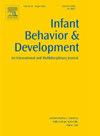单语和双语婴儿对双模和三模音素类别的分布式学习。
IF 1.9
3区 心理学
Q3 PSYCHOLOGY, DEVELOPMENTAL
引用次数: 0
摘要
分布式学习被认为是婴儿学习所接触语言的母语音素的一种机制。当听到两种语音流时,双语婴儿可能会发现其他策略更有用,对分布式学习的依赖程度会低于单语婴儿。一系列研究探讨了双语经验如何影响分布式学习在新颖音素分布中的应用。6 到 8 个月大的单语和双语婴儿进行了一项分布式学习任务,使用的腭辅音刺激根据发声时间分为三种分布。将接触单模态分布后的表现与接触相同发声时间线索的双模态分布(实验 1)和三模态分布(实验 2)后的表现进行了比较。结果表明,单语和双语婴儿在所有任务中的表现相似,而且婴儿能够学习双模和三模音素分布。这些结果表明,分布式学习机制具有普遍性,但未来的研究需要测试两组婴儿和分布式的表现是否相同。本文章由计算机程序翻译,如有差异,请以英文原文为准。
Distributional learning of bimodal and trimodal phoneme categories in monolingual and bilingual infants
Distributional learning has been proposed as a mechanism for infants to learn the native phonemes of the language(s) to which they are exposed. When hearing two speech streams, bilingual infants may find other strategies more useful and rely on distributional learning less than monolingual infants. A series of studies examined how bilingual language experience affects the application of the distributional learning to novel phoneme distributions. Monolingual and bilingual infants between 6 and 8 months old performed a distributional learning task using palatal consonant stimuli grouped into one of three distributions based on voice onset time. Performance after exposure to a unimodal distribution was compared to performance after both a bimodal (Experiment 1) and trimodal distribution (Experiment 2) of the same voice onset time cue. Results indicated that monolingual and bilingual infants performed similarly on all tasks, and infants were able to learn both bimodal and trimodal phoneme distributions. The universality of the distributional learning mechanism is suggested by these results, but future research would need to test the two groups and distributions for equivalence of performance.
求助全文
通过发布文献求助,成功后即可免费获取论文全文。
去求助
来源期刊

Infant Behavior & Development
PSYCHOLOGY, DEVELOPMENTAL-
CiteScore
4.10
自引率
4.80%
发文量
94
期刊介绍:
Infant Behavior & Development publishes empirical (fundamental and clinical), theoretical, methodological and review papers. Brief reports dealing with behavioral development during infancy (up to 3 years) will also be considered. Papers of an inter- and multidisciplinary nature, for example neuroscience, non-linear dynamics and modelling approaches, are particularly encouraged. Areas covered by the journal include cognitive development, emotional development, perception, perception-action coupling, motor development and socialisation.
 求助内容:
求助内容: 应助结果提醒方式:
应助结果提醒方式:


